(Updated 2024.06.20)
Introduction
Are you looking for the best bedding for guinea pigs? Well, you've come to the right place.
One of the most important things you can do for your guinea pigs is to provide them with a clean living environment. Your guinea pigs' bedding plays a big role in the cleanliness of their home. So what makes the best bedding for guinea pigs? Let's take an in-depth look.
What Makes the Best Bedding for Guinea Pigs?
Guinea pig bedding should be supportive and comfortable, as well as breathable, durable, and easy to clean. Investing time in finding the right type of cage liners will pay off in easier cleaning, longer-lasting liners, and fewer costly vet bills for avoidable health issues.
Guinea pigs are delicate creatures, and as responsible pet parents, it's our duty to ensure they live in a safe and clean environment. The fact that you're taking the time to research and read this article already proves you're on your way to becoming a great guinea pig parent! Your piggies are lucky to have you.
Best Practices for Maintaining a Clean Living Space
- Ensure your guinea pig's cage is secure and safe from other animals.
- Replace used litter and bedding frequently to maintain hygiene.
- Wash all bedding and hideouts regularly to prevent bacteria build-up.
- Use chemical-free cleaners to clean their habitat.
- Clean the water bottle and nozzle often to ensure fresh water.
- Refill the water bottle with clean, fresh water frequently.
- Remove dirty toys and accessories to maintain a clean environment.
You may be wondering, what is the best bedding for guinea pigs? In this blog post, I will share my personal findings on the best guinea pig bedding products. These insights are based on market studies, research papers, interviews with experts (veterinarians and relevant lab researchers), and personal experiences. Let's dive in!
For a detailed look at our recommended bedding, visit our GuineaDad Liner collection.
Why is bedding so important for guinea pigs?
The most important and primary function of rodent beddings is being able to absorb harmful moisture from urine and feces. By doing so, beddings provide a paramount function in slowing bacterial growth. This reduces the production of gases such as ammonia, carbon dioxide, and the buildup of harmful bacterial toxins. To prevent these buildups, guinea pigs need bedding all over their cage.

Guinea pigs are susceptible to a range of diseases, with bacterial infection being one of the most prevalent. According to a survey done by the Animal Welfare Research Arena, 40% of parents reported their guinea pigs to have been diagnosed with a bacterial infection at least once during their lifetime. This research supports the information I received from interviews with various experts.
Vets and lab researchers with extensive experience in guinea pigs have told me that bacterial infection is the most prevalent disease in these animals. Additionally, their findings show that in many cases, upper respiratory infection is the most common bacterial infection that causes death.
The research paper also shows that even simple illnesses, such as bacterial infection, can often lead to serious diseases and even sudden death. Yes, these possibilities are frightening. But with the right information and preventative measures, such instances can be avoided!

Source: Frequency of Owner-Reported Bacterial Infections in Pet Guinea Pigs
Earlier in the blog post we talked about how upper respiratory infection was the most prevalent disease in guinea pigs. The graph above supports this claim. The second most prevalent infection is a Urinary Tract Infection, which consists of 47% of the "Other" category. Both types of infections can be prevented with proper use of our well known guinea pig cage liners - the GuineaDad Liner.

As guinea pig parents who care deeply about our pets, it is our duty to do our best to prevent contractions of bacterial infection. Minimizing the chance of bacterial infection will dramatically increase the likelihood that our guinea pigs will live a long and healthy life.
This is why choosing the correct guinea pig bedding is extremely important. There will always be a wide array of different types of liners and guinea pig bedding options that you can purchase. Unfortunately, most are sub-par quality and some are even outright hazardous for guinea pigs, despite being marketed as bedding options for guinea pigs and other small animals.
On top of this, different brands produce a ranging quality of products, which makes it even harder for the consumers, (especially new parents), to choose the right product for their guinea pigs. You may be asking things like what bedding can you not use for guinea pigs?
I will talk about this wide array of bedding options, rank them from the worst guinea pig bedding, to the best guinea pig bedding, along with some information to support my rankings. By the end of this article, I will also talk about what made me so upset as a parent of three little princess guinea pigs, which in turn convinced me that I had to start GuineaDad.
Worst to Best: different types of guinea pig bedding. Which bedding is the best for guinea pigs?
Cedar Bedding and Pine Bedding (Softwood Shaving)
Rating : 1 out of 5

Sure, cedar and pine bedding have that fresh, natural forest smell to it. But contrary to popular belief, "natural" is not always good. Many new guinea pig parents purchase cedar and pine bedding because they are cheap and readily available. They also realize that wood shavings are effective at masking guinea pig’s urine odor.
But did you know that cedar and pine toxins can negatively affect guinea pig's respiratory and liver systems? According to the article with references to the Journal of Allergy and Clinical Immunology, the acid given off by the softwood bedding can destroy cells that line the lungs and trachea of guinea pigs. Not only that, but the experiments have also shown that toxins from pine and cedar bedding for guinea pigs can also damage the liver of these small animals.
The toxicity of these two types of popular guinea pig beddings is well documented, and should never be used for your guinea pigs.

It may surprise you that humans and guinea pigs actually have a lot in common.
For example, humans that work in cedar and pine sawmills have been shown to have higher rates of asthma diagnoses rather than those working in less dusty environments. The same phenomenon happens within our furry friends, but on an even deeper level. Because guinea pigs have much more sensitive noses and respiratory systems than us humans, they are at an increased risk of illnesses, primarily respiratory infections.
Living and sleeping on cedar wood shavings will be constantly irritating their body. The areas of their bodies where they may be in the most danger of illnesses are their nasal passages, throats, and lungs. When these organs are in constant exposure to harmful toxins, that is what leaves them susceptible to harmful bacteria that can cause upper respiratory infections and pneumonia.
And your guinea pig doesn’t even need to ingest the bedding to be in danger.
By simply breathing in the fumes from the toxins in cedar and pine shavings, harmful substances are passing through the lungs and infiltrating the blood. So much so, that their livers can not handle these needs of detoxification - causing liver failure.
At the beginning of my journey of being a pet parent, I was far from perfect. When I first got Peanut (my first female guinea pig), I bought a small cage from my local pet store, and pine bedding that one of the sales associates recommended. Using the pine wood shaving for the first three days with Peanut was one of the many mistakes that I had made as a new guinea pig parent just starting out.
As I quickly learned more about guinea pigs, I realized that there is so much information that needs to be researched, considered, and applied to our pets!
Newspaper, Straw, Corn Cob, Pellet and Hay
Rating : 1 out of 5

Thankfully I never tried these types of bedding for my girls (Peanut, Tofu, and Dumpling). These types of guinea pig bedding are now considered to be a bedding of the past. A major issue with using newspaper bedding as cage liners for guinea pigs is that it contains ink, which when wet starts to disperse. The ink spreading may be harmful for the guinea pigs. Corn cob and straw on the other hand has a problem of molding or has reportedly been eaten by guinea pigs which can cause swelling and intestinal blockage.

But overall the most common issue is their poor absorbency capabilities.
The bedding easily gets wet and dirty, which then provides a perfect environment for mold and bacterial growth. With non-absorbent material, you are essentially exposing your guinea pigs to harm by increasing their risk of bacterial infection. These beds also do not provide an adequate amount of cushion for guinea pigs' sensitive feet. This can result in your guinea pigs being diagnosed with a condition known as Bumblefoot.
In my time spent volunteering at various rescue centers, I have seen a fair amount of Bumblefoot cases. It is extremely painful for guinea pigs, and in serious cases, can lead to amputation. Many vets will also tell you that Bumblefoot is exceedingly common in guinea pigs that do not have optimal bedding options.
GuineaDad Liner is tried and tested to make sure that you won’t have to worry about any possibilities of wet bedding, or even worse, bacterial growth from moist environments. Our innovative fleece liner design effectively absorbs any liquid quickly into its bamboo layer while simultaneously ensuring nothing leaks through.
Our GuineaDad Liner achieves this by trapping the liquids between the middle layer, and the waterproof backing layer. By providing and ensuring a dry environment for our guinea pigs, this drastically reduces the chance of contracting Bumblefoot.
Aspen Shaving (Hardwood Shaving) / Kiln-Dried Pine
Rating: 2 out of 5, respectively

Unlike softwood shavings, Aspen bedding for guinea pigs do not have the dangerous volatile oil. However, aspen is known to be less absorbent than pine. Absorbency is incredibly important, as the main function of proper beddings is to be able to absorb moisture from urine and feces, as we stressed earlier in this blog. Aspen bedding has been proven to have low volumetric absorbency rates

Kiln-dried pine is a pine bedding that has gone through special treatment to have a weaker pine smell and fewer levels of volatile oil present. But even then, pine is still pine. Pine shavings for guinea pigs will still have a bit of smell and oil that could be harmful especially if there is a lack of ventilation around the cage.
Aspen bedding and kiln-dried pine shavings both have limited chemical substance that is considered to be hazardous for guinea pigs. But, due to the nature of wood shavings, they both contain dust. Even the smallest amounts of dust are proven to be harmful for your guinea pig.
Research done by Wirth, Ewaldsson, and Burn shows that beddings must be non toxic and dust free, if they are to be truly beneficial to the animals and their health.
Just like every other product out there, not all wood shavings are made/packaged/stored/transported the same. Some brands do a better job than others in removing the dust, minimizing the scent, and so on. Unfortunately for us consumers, the difference in scent is often very subtle, and hard to detect by humans.
The amount of dust is often hard to detect because the most dangerous type of dust (the kind that irritates and inflames the respiratory system) is so small that it is difficult to see with the naked eye.
Paper Bedding
Rating: 3 out of 5, (huge variance among different vendors)

In the simplest of words, you can pretty much consider guinea pig paper bedding to be the upgraded version of the aspen bedding. The paper bedding does not have any harmful scents, is more absorbent than wooden shavings, and is also softer on the guinea pig's sensitive feet.
However, I want to emphasize that on average, paper bedding outperforms wood shavings. The reason why I said "on average" is because not all of the paper bedding products are created equally. Some poorly made paper bedding is worse than even the best made aspen bedding.

On the other hand, paper bedding is essentially crumbled paper. The filtering process is extremely important here because of the amount of dust. The presence of small particles is especially harmful to the guinea pig's respiratory system. If you decide to go with the paper bedding option, I strongly suggest that you look past the marketing scheme and find out which one really is the best for your guinea pig.
In the next section, I will cover the downfall of paper bedding and why I started using the fleece cage liners for my guinea pigs. Then I will cover why I decided that I had to create the GuineaDad Liner to make sure my girls stay healthy, and live a long lasting happy life.
Generic Fleece Liner
Rating: 3 out of 5

After four to five months of raising Peanut and Tofu (I had not yet adopted Dumpling from the rescue at this point), I started to detect some issue with Tofu's health. Normally guinea pigs secrete white fluid from their eyes, which they use to groom their face and body.
One day, I started seeing dried white crust around Tofu's eyes. For the first couple days, I did not think much of it because humans get eye crust in the morning too. But then, the crust did not go away, even if I cleaned her eyes every day. I called the exotic vet close to my house, and visited their office. The vet told me that I didn’t need to worry too much, especially since Tofu was active, and had been eating and drinking well.
One week had passed and I started to see something red protruding from the bottom of her eye. I went to visit the same vet, and he gave me a prescription for an eye drop that I was supposed to apply every day for the next week or so.
Another week had passed and I saw zero signs of improvement. I visited two other exotic vets to see what could be the issue.
The second vet said the exact same thing as the first vet and prescribed the same prescription (which I knew at that point wasn’t going to be effective). The third vet told me that it was bacterial conjunctivitis. He then prescribed me some antibiotics along with an eye drop. Tofu immediately started getting better. I went in for a follow-up and the doc told me that Tofu was fully healed.
Unfortunately, the bacterial conjunctivitis came back shortly after a month.
I returned to the doctor, but realized that I couldn't just depend on the treatment alone. I had to do something to prevent it from happening again in the future. I started doing research in regards to all sorts of bacterial infections in guinea pigs. I started calling the experts to arrange some meetings to discuss bacterial infections in guinea pigs and other small animals.
As a result of the meetings and the meticulous amounts of research, I realized that when it comes to guinea pig habitats, there were four factors that we had to focus on minimizing; dust, moisture, bacteria, and coarseness.
The guinea pig cage liner was "almost" the best guinea pig bedding. Unlike paper bedding and wood shavings, guinea pig cage liners had zero dust - as long as they were washed thoroughly. The quality varies from fleece to fleece, but the guinea pig fleece bedding generally provides a softer texture for the guinea pig's feet.
The moisture control, however, was on par with paper bedding at its best. The bacteria control was equal or slightly better than paper bedding only because fleece liners promoted a thorough daily spot cleaning (this is where you have to remove guinea pig poop and soiled hay daily).
Let’s go back to Tofu’s story. Since the fleece cage liner solution was similar to paper bedding, but had clearly outperformed in two other categories, I immediately changed the bedding from paper bedding to DIY fleece bedding for guinea pigs. I started using an old cotton towel for the absorbent layer and fleece for the top layer. Tofu's red protrusion in the eye improved a bit. And although the size of the red protrusion got smaller, it never completely went away.
GuineaDad Liner
Rating 4.5 out 5 (Most popular Guinea Pig Liner Loved by 200,000+ Piggy Parents!)
I knew I had to do more to treat Tofu, and to be able to prevent bacterial conjunctivitis once and for all. None of the fleece cage liners or simple DIY solutions were going to completely cure and prevent the bacterial infection. Nevertheless, I was determined to cure Tofu's condition.
I started doing more research, and I learned about how different fabric materials all had their own various creation processes. During my time researching, I stumbled upon the properties of bamboo. Bamboo fiber is known to have antimicrobial and antibacterial properties which makes it an excellent choice to help fight off bacteria that may be found in guinea pigs’ bedding.
Excited about my findings, I contacted experts and conducted research of my own. To my exhilarations, not only does it have these superb properties, it also is very very water absorbent! This was excellent news, as not only does the bamboo fiber have the potential to neutralize bacterial growth, but it would help keep guinea pig’s feet dry, essentially diminishing the chance for bumblefoot.
To try and confirm my findings, I arranged more meetings and discussions with experts. Learning wasn’t the only thing I was trying to accomplish. I needed to apply it to ensure a better environment for Tofu, which is how GuineaDad Liner came to be. After countless repetitions of creating prototypes and observing Tofu's symptoms, I finally ended up with what is now the GuineaDad Liner (actually version 1).
Through the meticulous research I conducted and what came to be, GuineaDad Liner helps to resolve the common issue of an unsanitary and dusty environment so that guinea pigs are able to thrive. The properties of the bamboo fiber found only in GuineaDad liners reduce the chances of bacterial infections that were once so commonly found in guinea pigs.
It didn’t just end there, because guinea pigs possess a strong need to hide, their feelings of security and comfort rely largely on their ability to find access to a covered refuge. I recognized this completely, and that is why our product GuineaDad Liner has a pocket - to provide them refuge from the world around them, if they were to ever need it.
I didn't create the GuineaDad Liner to sell. My sole goal was to cure Tofu's bacterial infection and prevent any sorts of disease for my other two girls, Peanut and Dumpling. Luckily at the time, some people in the guinea pig community were already following our story, and also wanted some made for their guinea pigs. And that's how we started, and how we are where we are today! My wish is the same as every other pet parent in the world. I want my girls to live a long, happy, and most importantly, a healthy life.
(Product shown: GuineaDad 2x1 Small Size Liner W/O Pocket)
GuineaDad Liner is the fruit of love, and has become its very own category. I am glad to received emails from our customers everyday about how GuineaDad Liner has helped their guinea pigs. In addition to promoting young guinea pigs to stay happy and healthy, we have helped sick and old guinea pigs all the way up until their last days.
The customers have been so thankful for the product that has improved their guinea pig’s health and wellbeing. And they strongly believe that GuineaDad Liner extended their small pet’s time to live happily until the end. Below is one of the many emails and reviews that I have received from guinea pig parents, and reviews from Instagram influencers.
"I bought your liners because one of my little ones was very ill and still isn't healthy... I decided to buy them because of his cough. I think these liners help save his live. It's a shame they are not really known where I live! I am from Austria and found them with luck on the internet! Thank you so much for inventing them. Tiberius is still ill but hopefully he stays with me for a few more years!"


GuineaDad Premium Liner
Rating 5 out 5 (Best Guinea Pig Bedding Option)
Every year since we’ve released our GuineaDad liner, we’ve made improvements upon it to make it even safer and more effective for our guinea pigs. I’ve always said that when our guinea pig’s environment is as clean and as safe as possible, it’s the best chance to lengthen their lifespan to make sure that they’re a part of our lives for longer.
I’m committed to doing what I can with the technology and methods as they become available to me in order to constantly improve our liners. When we developed the Premium GuineaDad Liner, I wanted to make sure that it’s the best for keeping my guinea piggies, and yours, as happy and healthy as we can.
(A couple of the raving reviews for GuineaDad Premium Liners; Click the photo above to get your own!)
We used AirCell™ technology to ensure that there’s a pocket of air within the liner that makes it easier for it to dry faster even while it is being used. A dry liner with antibacterial fibers ensures that there is less bacteria to linger and harm the guinea pigs, which is vital—we know that most of the time what leads to our guinea pigs’ lives being shortened are infections, whether it’s respiratory or otherwise.
We want to prevent these infections from happening in the first place at the source.
Even with all the steps we’ve taken to ensure that our GuineaDad Liner and GuineaDad Premium Liners are the very best of the best, that they can do the very important job of keeping your guinea pig’s environment clean, you as the piggy parent will still need to take some steps in a strict maintenance schedule.
You’ll need to spot clean daily, and commit to doing piggy laundry at least once a week using warm water, unscented detergent, and distilled vinegar, and give it the time to properly dry. This may mean buying multiple sets of the liners to rotate out so they constantly have a clean and safe living environment.
It’s important to meet their most basic needs—clean, safe bedding, a large enough cage, water and fresh hay—before anything else. This is our duty as guinea pig parents. Safe and healthy guinea pigs with longer lifespans mean happy guinea pigs.
If you decide to purchase GuineaDad Liner or the GuineaDad Premium Liner, be sure to first sign up for the GuineaDad Rewards Program located at the bottom right corner (orange gift icon). You will receive every benefit when you sign up, purchase, and share through social media, (even on your birthday). The points can also be used for further discounts in the future!
You can also watch our YouTube videos where we compare different types of guinea pig bedding against our own fleece bedding for guinea pigs.
In this animation above Peanut, Tofu, and Dumpling will go on a quest to find the perfect guinea pig bedding outsmarting the evil wolf.
Let us hear about some of your experiences with other beddings or even our GuineaDad Liners!
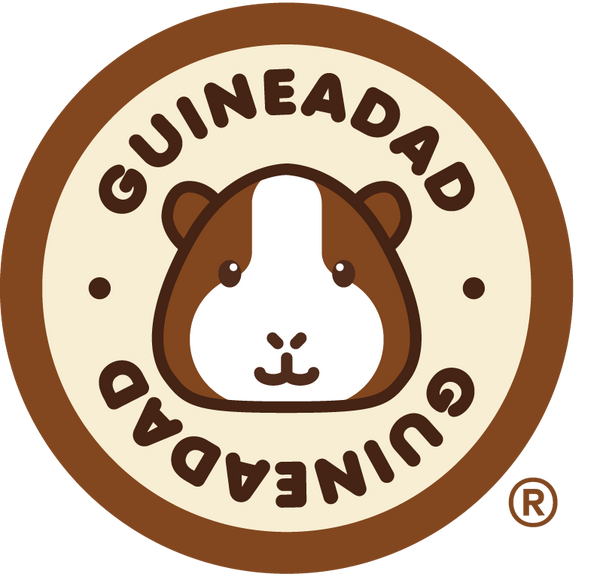


















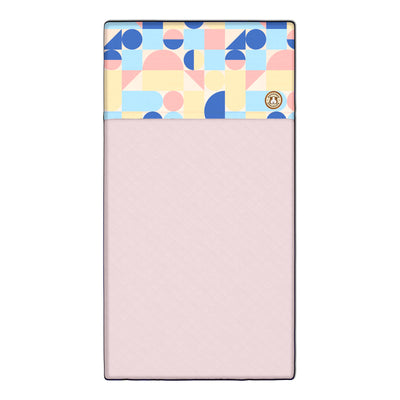








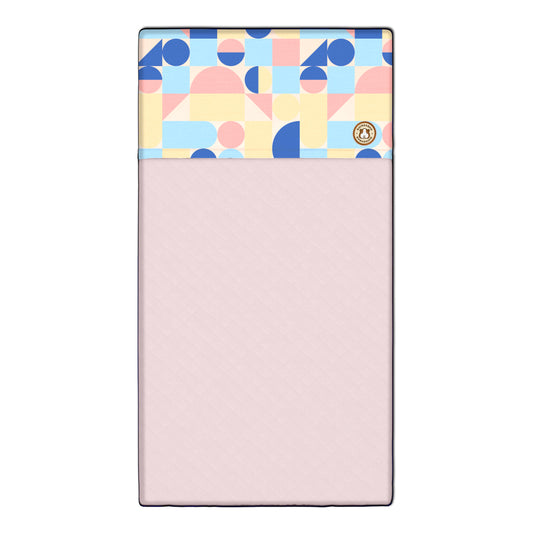


























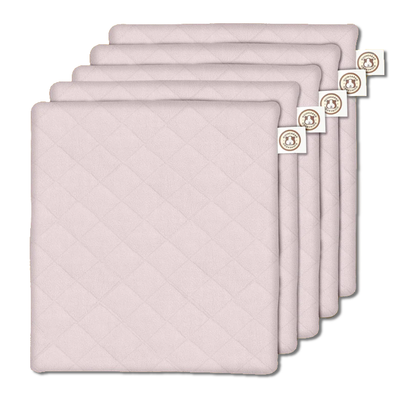
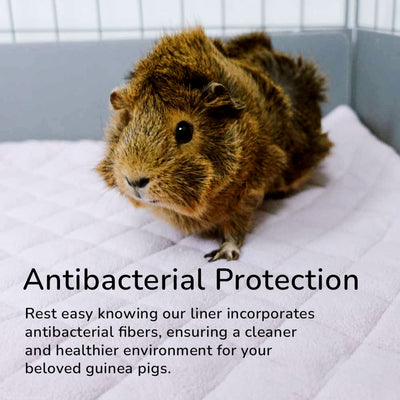
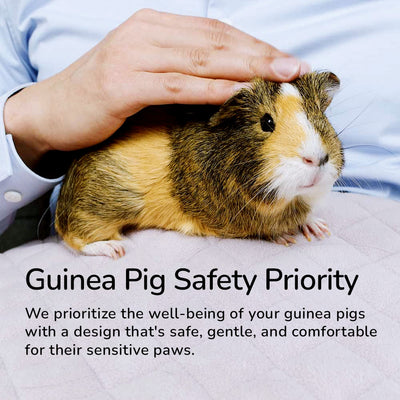
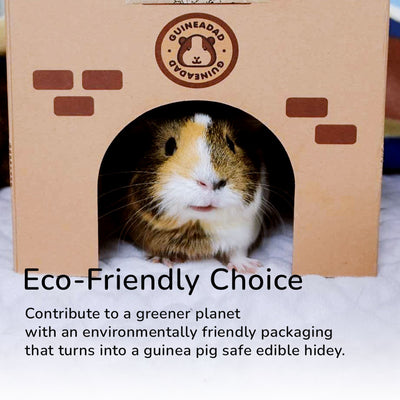
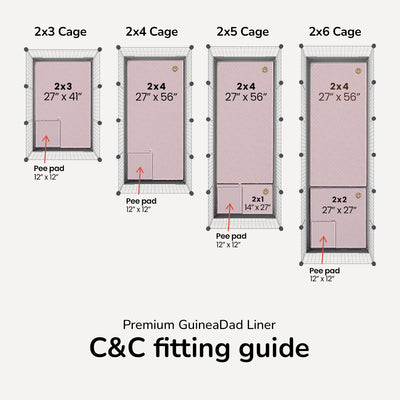
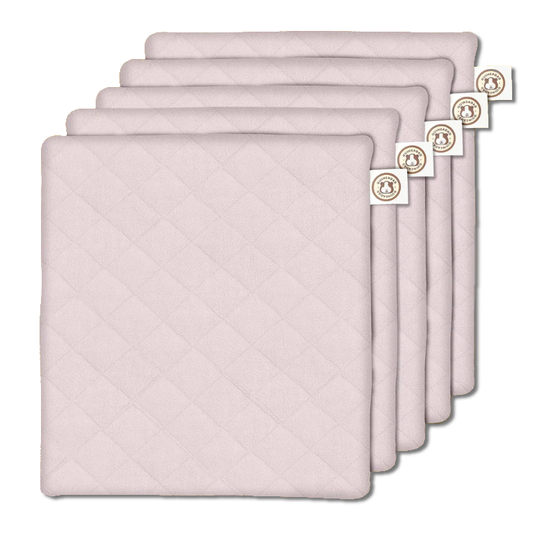















8 comments
I am convinced you are a guinea pig whisperer — guinea pigs whisper what they want to you and you make it. When we first got our guinea pig, S’more, we used store bought paper bedding. He spent most of his time in the hide. Since buying your liner and putting it in his cage, he wanders around sniffing the air and everything else. It’s like he likes how the liner feels on his feet and is comforted by the fact that the pocket is always nearby in case he wants to run away (and then pop back out as if apologizing for running away).
I have made my own cage liners with my last Guinea pig. I used a quality fleece with cotton toweling in the middle. I changed the bedding every morning.I made two weeks worth of the liners. I want another piggy.I better get to work on liners first.
I want to switch to these liners in their sleep trays as well but am concerned with the amount of washing I would be doing. They mostly pee/poop inside of where they sleep. What is your recommendation for washing and how often should I be running a load of laundry??
I’m very excited to try your bedding what do you recommend in water bottles it seems like they all leak the big ones drip like crazy and the glass ones I worry about breaking I’m trying the big ones and they’re ridiculous you have to lay them practically sideways for them not to leak as much! Help
Hi I had a question about your liners before I purchase a couple. I read a lot from people online that you only need to wash your liner once a week and sweep up the poop daily. However I’m curious as to how that keeps them sanitary because the bacteria from their poop will still be on top on the liner until it’s washed once a week and I’m concerned because I have two Guinea pigs and I’m worried that waiting a week to wash a liner will cause them issues because of bacteria on the outside top layer of the liner even though the pee is absorbed inside of the liner what helps keep the top layer sanitary enoigh after peeing so they can walk on it for a week straight before having to wash?